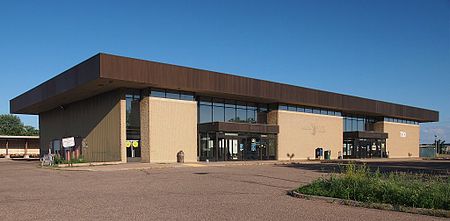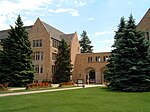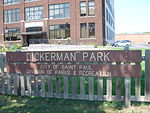Midway station (Minnesota)

Midway is a former Amtrak intercity train station in the Midway neighborhood of Saint Paul, Minnesota, United States. It was last served by Amtrak's daily Empire Builder (with service from Chicago, Illinois to Seattle, Washington or Portland, Oregon) and, for a time, by the North Star (with service from Chicago, and later from this station, to Duluth, Minnesota), as well as briefly by the North Coast Hiawatha (with service from Chicago to Seattle). It was built to a design developed under the Amtrak Standard Stations Program. The Midway station was closed for passenger service on May 7, 2014, with passenger service being moved to the restored Saint Paul Union Depot. For a time after its closure the station was still used to service the Empire Builder but was later abandoned.
Excerpt from the Wikipedia article Midway station (Minnesota) (License: CC BY-SA 3.0, Authors, Images).Midway station (Minnesota)
Transfer Road, Saint Paul Hamline - Midway
Geographical coordinates (GPS) Address External links Nearby Places Show on map
Geographical coordinates (GPS)
| Latitude | Longitude |
|---|---|
| N 44.9631 ° | E -93.1846 ° |
Address
Midway
Transfer Road
55114 Saint Paul, Hamline - Midway
Minnesota, United States
Open on Google Maps








